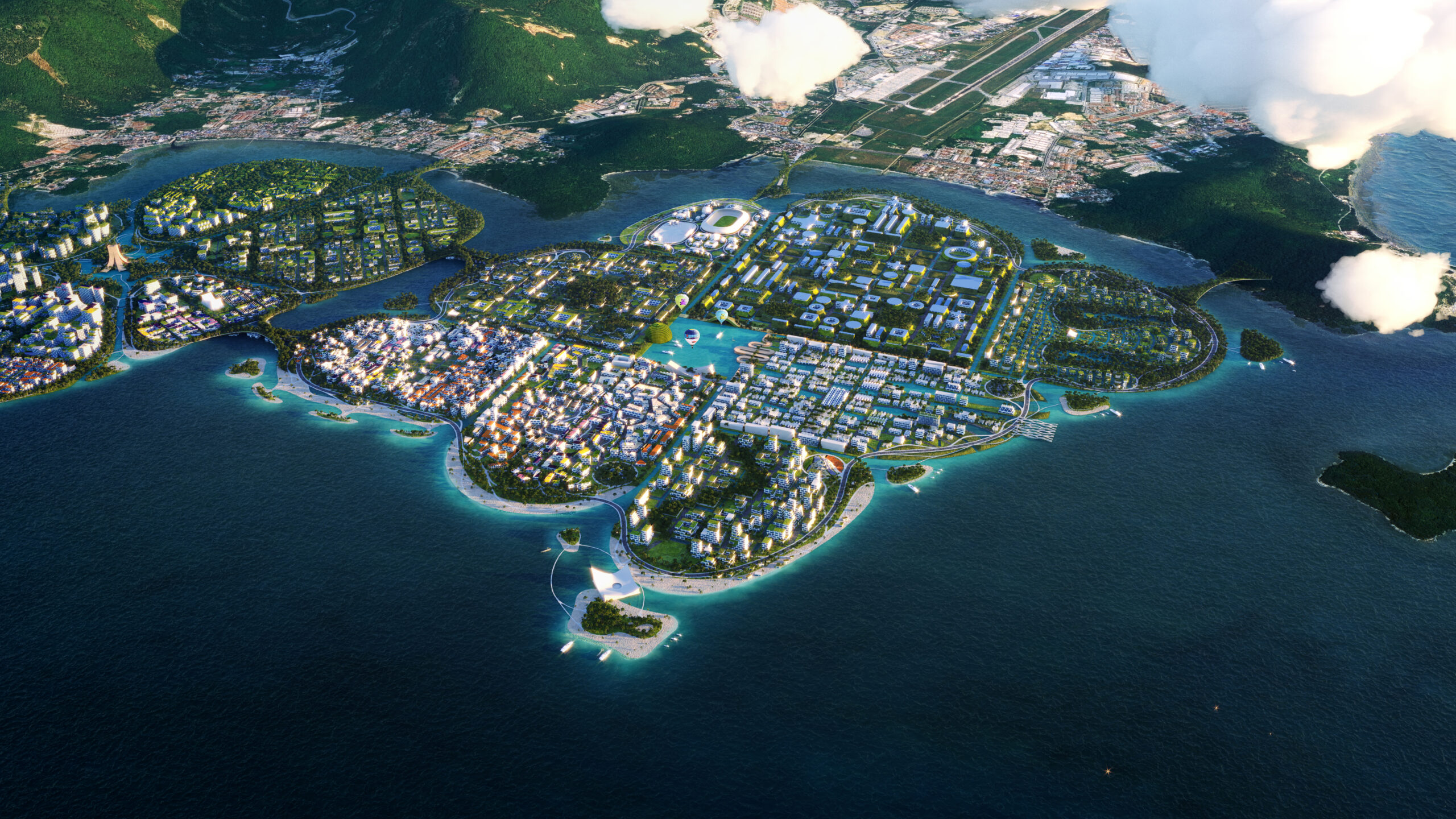
BIG reveals masterplan for BiodiverCity, three artificial water lily islands off the shore of Penang Island, Malaysia
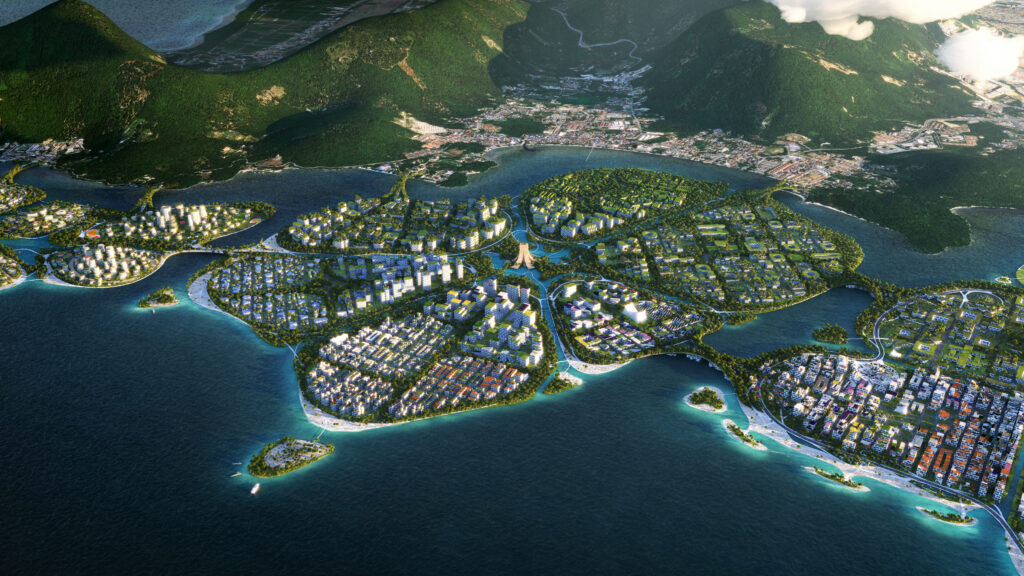
BIG, the studio founded by Bjarke Ingels, with the Hijjas studios, as a local partner, and Ramboll, for engineering and project management, have been selected as winners to design a masterplan for Penang South Islands, providing Penangites with approximately 4.6 km of public beaches, 600 acres of parks and a 25 km waterfront.
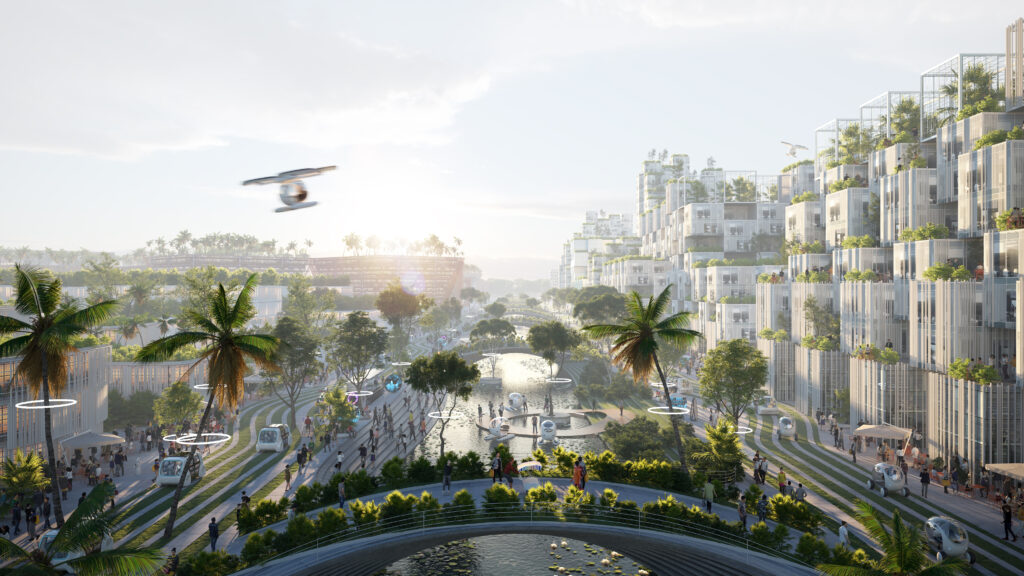
BiodiverCity masterplan supports the Panang2030 vision with a clear focus on livability, on stimulating a socially and economically inclusive development, and on environmental sustainability for future generations. BiodiverCity will be the new sustainable, global destination where cultural, ecological and economic growth is secured and where people and nature co-exist in one of the most biodivers places on the planet at the southern shore of Penang Island.
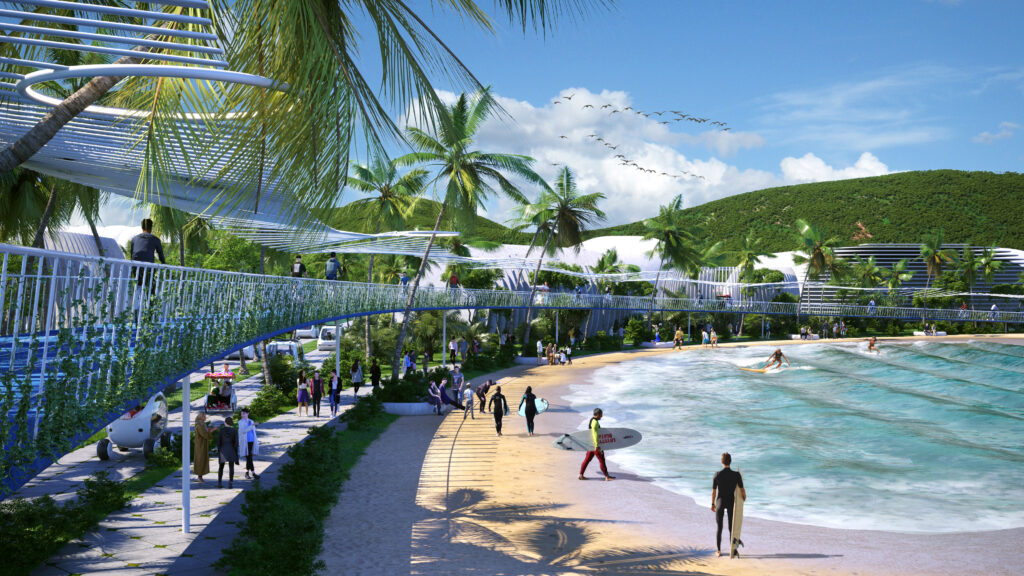
Penang’s vast biodiversity spans various topographies and protected environments which in recent years have seen its coastal zones and natural habitats disrupted by urban developments. In contrast, BiodiverCity is concived as an Urban Mosaic of three diverse islands, and set of urban guidelines for mixing programs, addressing pedestrian and mobility networks, building sustainability and harvesting resources.
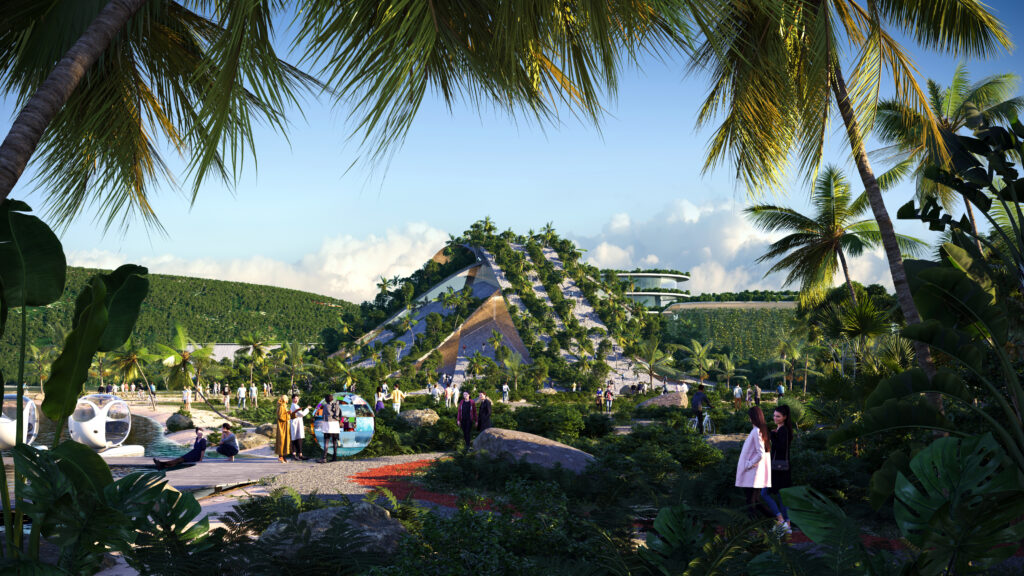
The three islands bring together mixed-use districts of 15,000 to 18,000 residents across 50 to 500 acres, and continuous 50 to 100m buffer around each district, establishing habitat connectivity and supporting edge ecologies in reserves, parks, corridors and urban plazas.
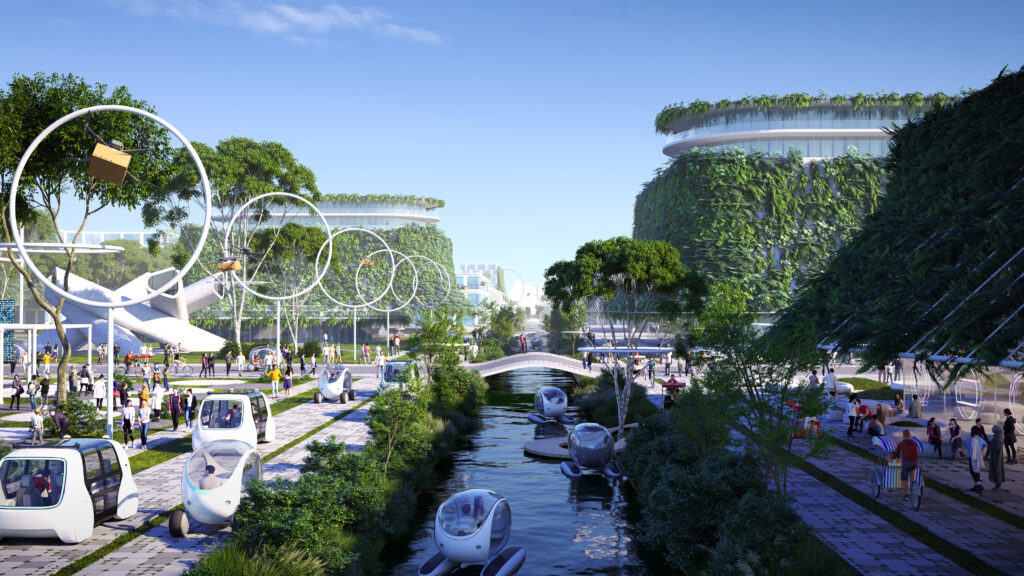
The Channels, BiodiverCity’s first island, is constructed in three complementary phases: in Phase 1, Active Destinations include a wave pool and technology park; in Phase 2 a Civic Heart establishes governance and research institutions in the area; and Phase 3, a cultural Coast builds upon the heritage and vibrant creative energy of Penang’s George Town to create a regional and international draw.

As the heart of the district, the Channels’ 500-acre digital park includes spaces for research, development and local business opportunities. Malaysia’s newest public destination will be the future home for conferences, education centres and family-oriented park where locals and guests can explore the world of technology, robotics and virtual reality.
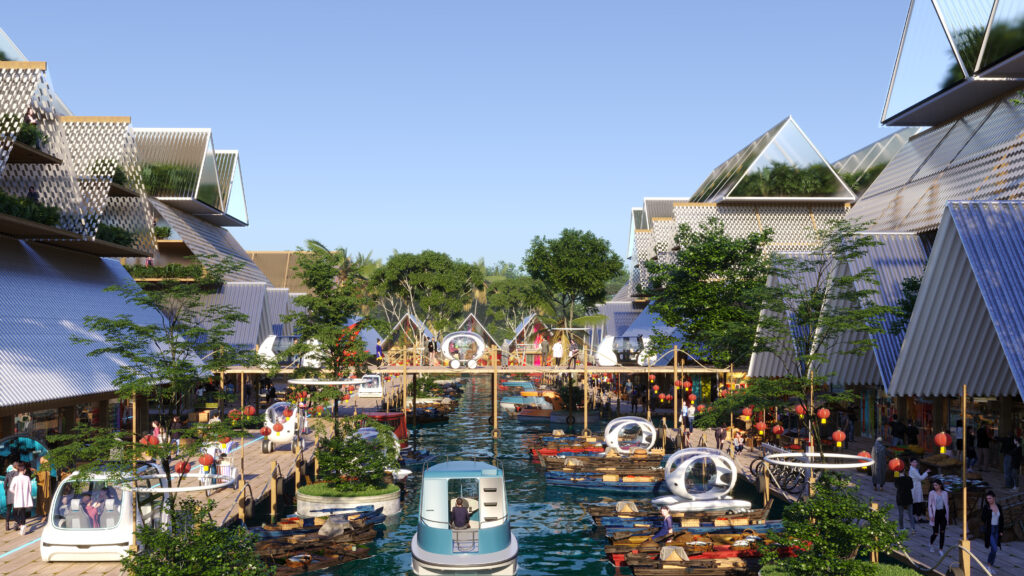
The building in BiodiverCity will be designed to prform efficiently and will to a large extent be constructed by low-carbon materials such as bamboo and Malaysian timber in combination with green concrete, a sustainable alternative comprised of industrial waste and recycled materials

By encouraging green roofs, facades, public and private open spaces, the islands can form a nearly continuous habitat mosaic feeding back into the forest, beaches, riparian zones and estuaries at island’s edges.

The Laguna, BiodiverCity’s westernmost island, is a oasis for ecological living, organized around a central marina. Eight smaller islands form a miniature archipelago, where floating, stilted and terraced housing takes advantage of the natural setting.
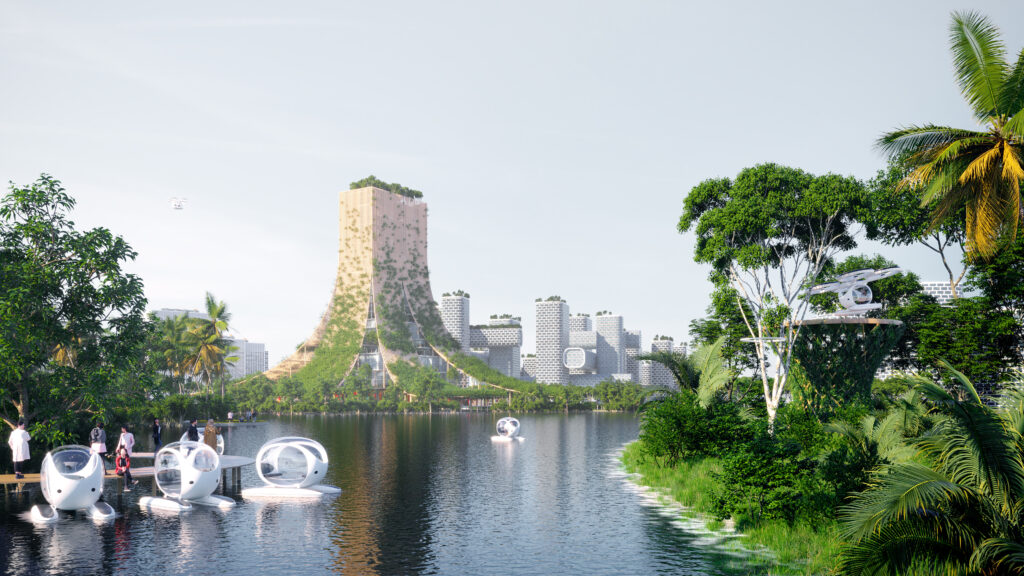
A web of ecological corridors connects forest reserves to coastal beaches while supporting habitats and communities across the islands. Within human-populated areas, animals are given safe passage through the continuous canopy and waterways, and within natural habitats, people can safely access elevated boardwalks.
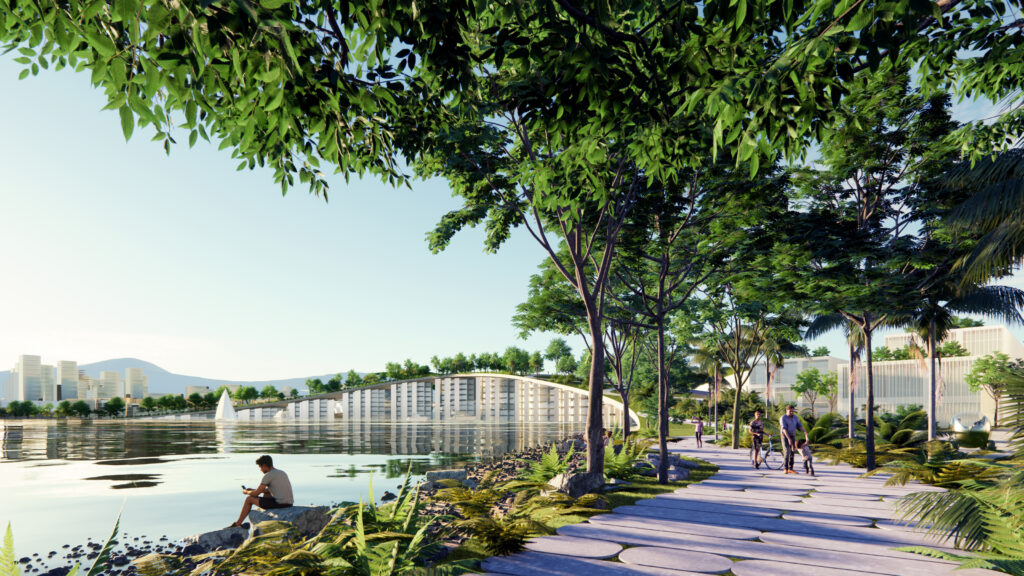
BiodiverCity supports a water, air and land-based autonomous network, aiming for a car free environment where streets serve as a safe and welcoming thoroughfare for bikers and pedestrian. Districts are efficiently connected below platforms to increase the efficiency of goods, services and regional mobility, while maximizing pedestrian safety throughout the public realm.
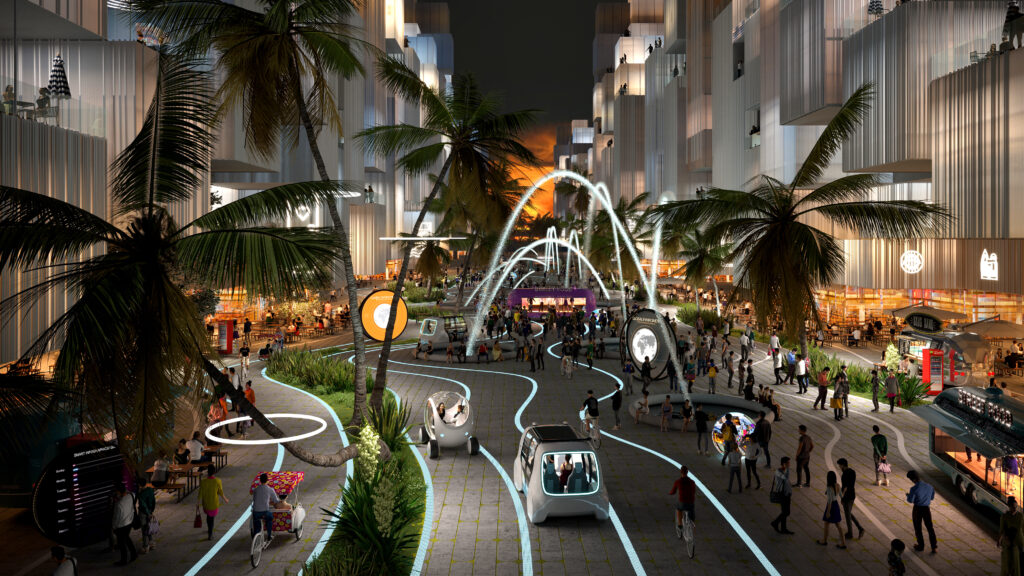
BIG is the architecture practice of Danish architect Ingels, which was founded in 2005. Today it has studios in Copenhagen, New York, London and Barcelona.
Elsewhere, BIG is working a masterplan for the “city of the future” with Toyota, which will be built beside Mount Fuji in Japan.